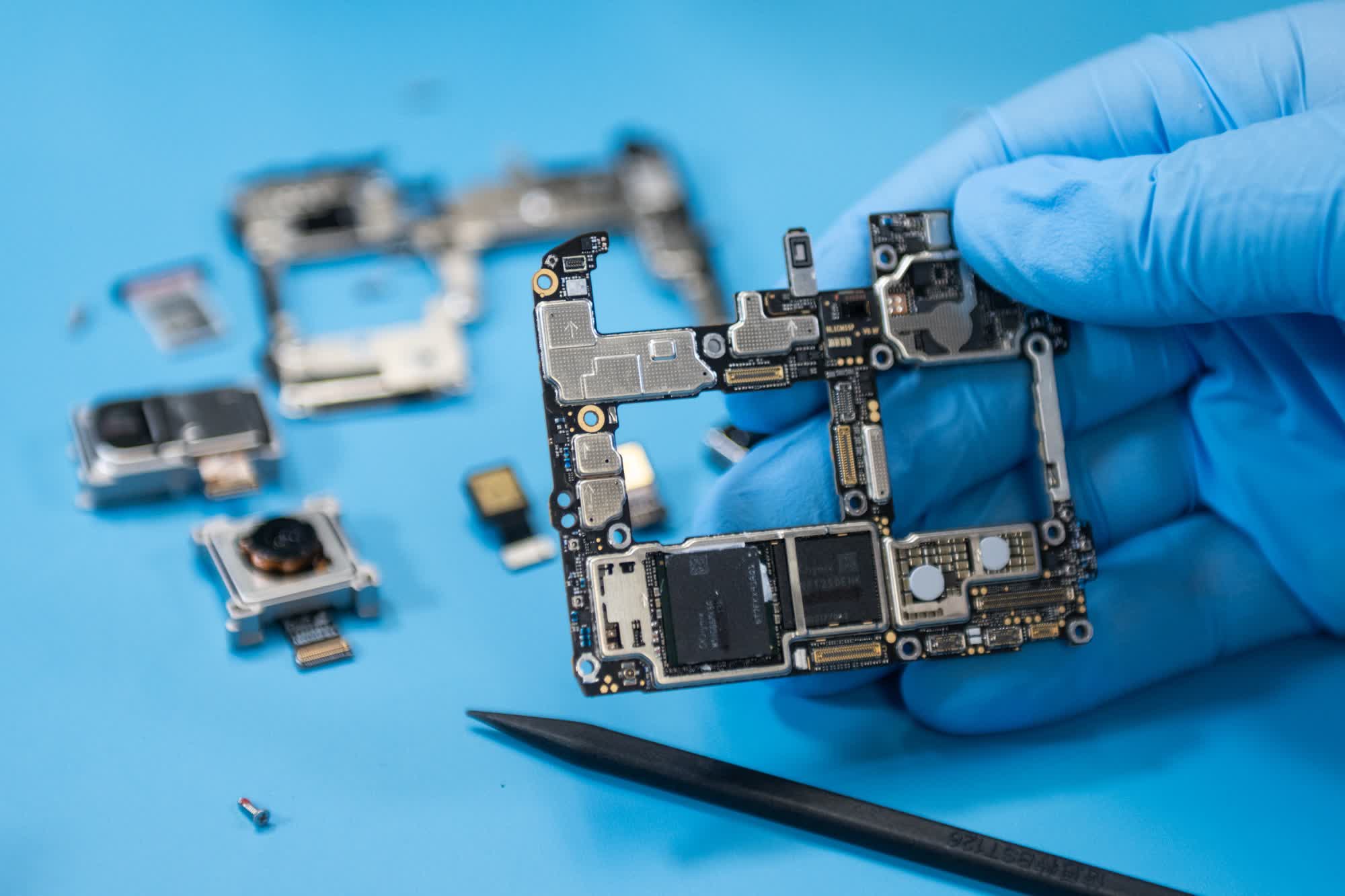Why it matters: Over the past week, the big news in certain circles has been the story about Huawei's new Mate 60 flagship phone and the seemingly miraculous Kirin 9000s chip that powers it. This chap has riveted everyone's attention as it seems to raise questions about the efficacy of the US government's restrictions on Huawei and China's access to advanced manufacturing processes.

At this stage, we still know very little about the chip. The Internet is filled with press stories about the chip, but they all seem to resolve to a series of benchmarks run by Chinese bloggers and a teardown from reputable firm TechInsights. They confirmed that the Kirin 9000 is produced by SMIC on what appears to be their 7nm process. And everyone's benchmarks show that the chip is competitive if not quite at the bleeding edge of performance. How was it was possible for Huawei to get around all the sanctions and does that mean they are not working?
First, we need a sanity check. We really do not know how good this chip is. Benchmarks only go so far in describing the real world performance of a phone, and it is possible that the phone does not perform quite so well under actual usage.
Editor's Note:
Guest author Jonathan Goldberg is the founder of D2D Advisory, a multi-functional consulting firm. Jonathan has developed growth strategies and alliances for companies in the mobile, networking, gaming, and software industries.
Second, prior to the crackdown Huawei's HiSilicon chip subsidiary was very good at their job, their modems and applications processors were almost the best in the industry, outperforming Qualcomm and giving Apple a run for its money. So their ability to design this chip is not the surprise, the surprise that was they were actually able to get someone to manufacture it for them.
We know that Huawei has been investing heavily in fabs in recent years. We saw signs of that in their investments in third parties, but it is also reasonable to assume they spent a lot of time and money working with SMIC engineers, efforts that would not show up publicly. Critically, we do not know what the yield of this chip is and whether it is remotely profitable for SMIC.
SMIC has been held to DUV machinery (deep ultraviolet lithography), cut off from ASML's EUV machines by US actions. Their 7nm process is probably the limit of what they can produce without access to EUV. And let's not forget that labels like "7nm" are marketing terms. In terms of actual comparisons what matters most is transistor density, and on this metric this source claims SMIC is about 10% behind what TSMC labels 7nm. There is a non-zero chance that SMIC is actually struggling to build these parts and is losing a lot of money in the process. (Again, we may never see this in their public accounts, as someone, somewhere is likely subsidizing this work.)
Also read: Nanometer Scale – The Art of Making Chips Smaller
Most people assume that SMIC is pushing the boundaries of what DUV can accomplish. Unless Huawei and SMIC have made some incredible, secret breakthrough, this means there is no future for this process. Maybe they can squeeze out a bit more density for one more round, but beyond that they would be breaking the laws of physics. So while the Kirin 9000 is a real achievement, we are highly skeptical that this really changes anything.

Huawei Mate 60 Pro smartphone teardown. Source: Bloomberg
Of course, this is a highly sensitive, intensely scrutinized area, and so we have entered the silly season of online commentary with exaggerated claims, wild extrapolations, and intense fear mongering littering Twitter. Part of the problem is that there are three large constituencies who want the Kirin 9000 to mean something more than it probably does...
First, there are the pro-China commentators. They want to show that China is resilient in the face of US "aggression", and they point heavily to the alleged 1 million Mate 60's already sold out in China. The second camp are US China watchers who want to see more sanctions against China, and so they are running around the Internet crying Wolf (or mythical reindeer lion Kirin) to force the Biden administration's hand in ratcheting up restrictions. And then there is a third camp who paint everything as a failure of the Biden administration (no names, but you know who we are talking about). Unfortunately, these three groups are very good at being vocal online even in the face of facts and common sense. There is an immense amount of noise in the channel right now.
Oddly, the most silent group are the two companies involved – Huawei and SMIC. Huawei is at the point where they feel no need to speak to the Western media, and have little reason to say anything. For their part, SMIC is desperately afraid of facing further US government restrictions and could very well end up saying nothing, ever about their role in this.
Put simply, this does not really change anything. It is unlikely that Huawei can get very far along this path. They can compete against today's phones, but soon the gap will grow to wide and they will have no way to narrow it. This means their phones will require more power than peers' to perform the same tasks, and the growing focus on AI in phones will just add to that problem.
That being said, this does show how Chinese companies will navigate the US sanctions. Pushing the boundaries, being incredibly judicious in their design trade-offs and the liberal application of duct tape to patch over problems. We could even argue that differentiation in phones has gotten so bad that many consumers may not care that much about the differences between a well-designed 7nm-based phone and a fully featured 3nm-based phone. However, in the bigger data center market these gaps will be much more important.
In short, the sanctions still seem to be working and forcing Chinese companies to make all kinds of compromises and shows the limits of what they can achieve without access to the global semis industry.
https://www.techspot.com/news/100097-huawei-land-magical-thinking.html